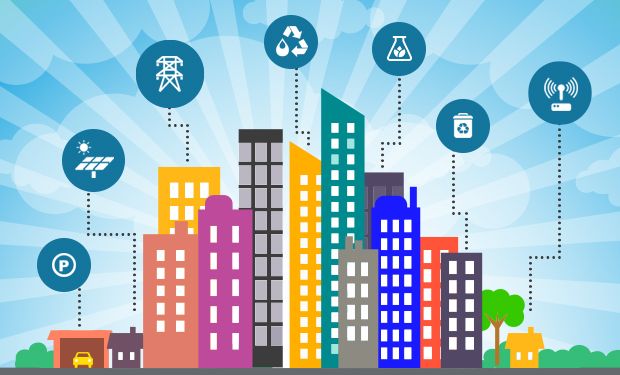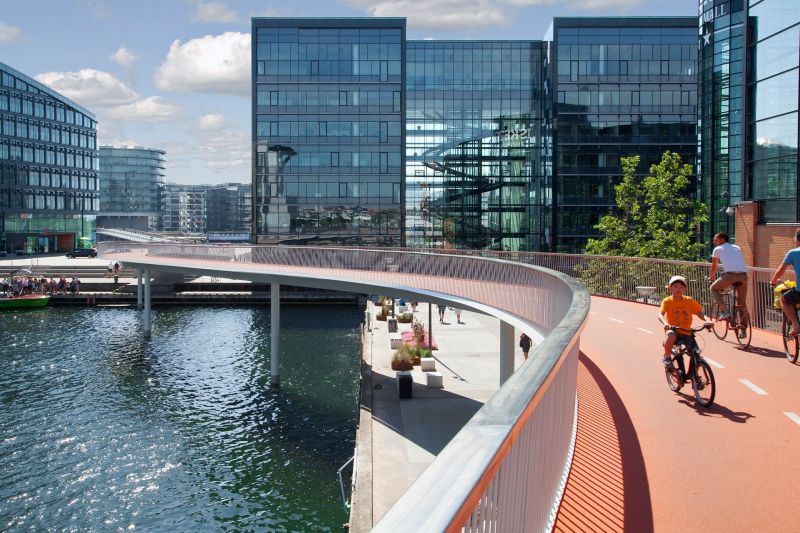Cities Are Bracing for the Future by Getting Smart
Published on by Robert Brears, Founder of Our Future Water, Young Water Leaders, Mitidaption & Author (Springer Nature, Wiley) in Technology
Our world is becoming more urbanized than ever. Today, more than half of us are city dwellers. By 2050, two-thirds of the global population will reside in urban centers, according to the United Nations.

That's a challenge for the cities of tomorrow, which will see an influx of 2.5 billion people by mid-century. They will have to manage increased consumption of water, heating and electricity, as well as a rise in traffic and greenhouse gas emissions if public transportation, parking and traffic congestion aren't properly addressed.
With all these pressures, will cities be able to secure a good quality of life for their residents while conserving resources responsibly?
Increasingly, cities around the globe think so. By transforming themselves into "smart cities" — urban centers that deploy technology and conduct big data analysis in a bid to improve traffic flows, conserve streetlight electricity and collect garbage at customized frequencies for each resident, among other things — municipalities from Copenhagen to Kansas City hope to provide services more systematically and sustainably.
"When you connect different kinds of data together in real time, cities can realize new efficiencies in many areas," said Munish Khetrapal, managing director of Cisco's smart cities division.
According to a projection by the industry consulting group IHS Markit, the number of smart cities worldwide will quadruple from 21 in 2013 to 88 by 2025.
New York City, Barcelona, London, Copenhagen and San Francisco are among those that have already embraced emerging technologies. Singapore is implementing a "Smart Nation" plan that involves saturating the city-state with sensors and cameras that will collect data about nearly every facet of its activities, enabling its government to monitor a vast range of operations in real time.

Three years ago, the Big Apple installed smart indoor lighting in 86 firehouses, which has saved the city $880,000 a year in energy costs. It also uses sensors in its water pipes to detect leaks and keep a watchful eye on water quality. The New York Police Department can also instantaneously detect gunshots, thanks to the Shotspotter sensor system.
Urban centers are increasingly linking the use of smart city technologies to their sustainability goals. Copenhagen, which aims to be carbon neutral by 2025, has installed sensors on its streetlights to monitor air pollution and sensors on its roads to help drivers find open parking spots, which eases traffic and reduces greenhouse gas emissions from unnecessary driving. Sensors on its waste bins allow authorities to monitor the levels of waste and adjust the frequency of pickups as necessary
The Danish capital is one of the first cities to adopt Cisco's new smart city platform, a cloud-based system that aggregates all of the data in a digital dashboard that provides a comprehensive view around the clock.
In India, the city of Jaipur has been saving electricity by dimming its street lights when sensors installed on the lights detect traffic lulls. They also enable city planners to improve the flow of cars through the timing of traffic signals by collecting data on traffic patterns.
"We are very happy that we have been able to actually deliver so many solutions in such a small span of time," Rajasthan official Shikhar Agarwal has remarked of Jaipur's advancements over the past three years. "Now we've become a case study that people from various cities from India and outside are coming and trying to learn things that we've been able to do here."
Source: Seeker
Media
Taxonomy
- Water Security
- Smart Grid
- Smart Meters
- Climate Change
- Climate Change Adaptation
- Climate Change Resilience
- Water-Energy-Food-Security
- Smart Grid
- Renewable Energy
- Green Building
- Sustainable Cities